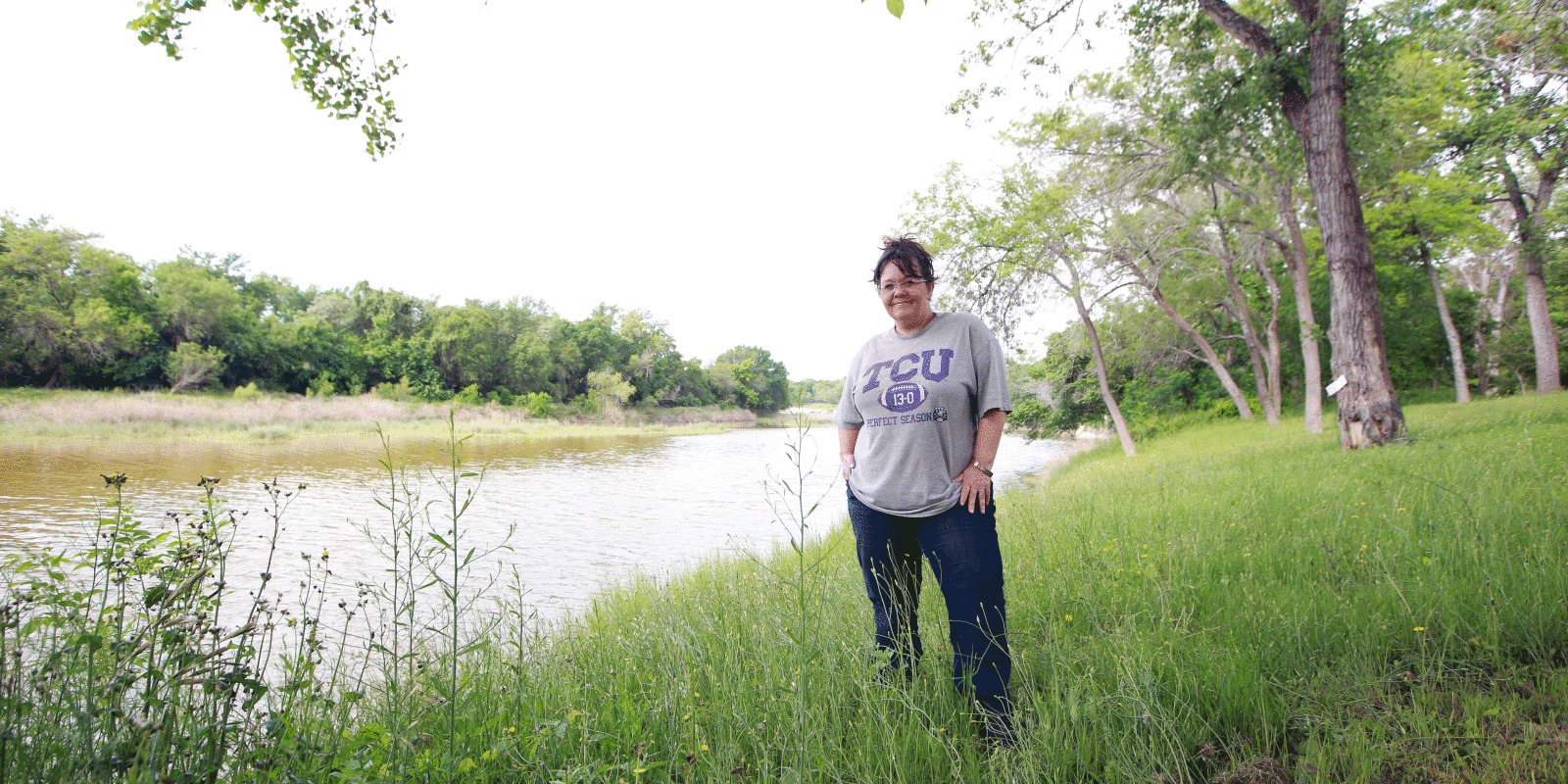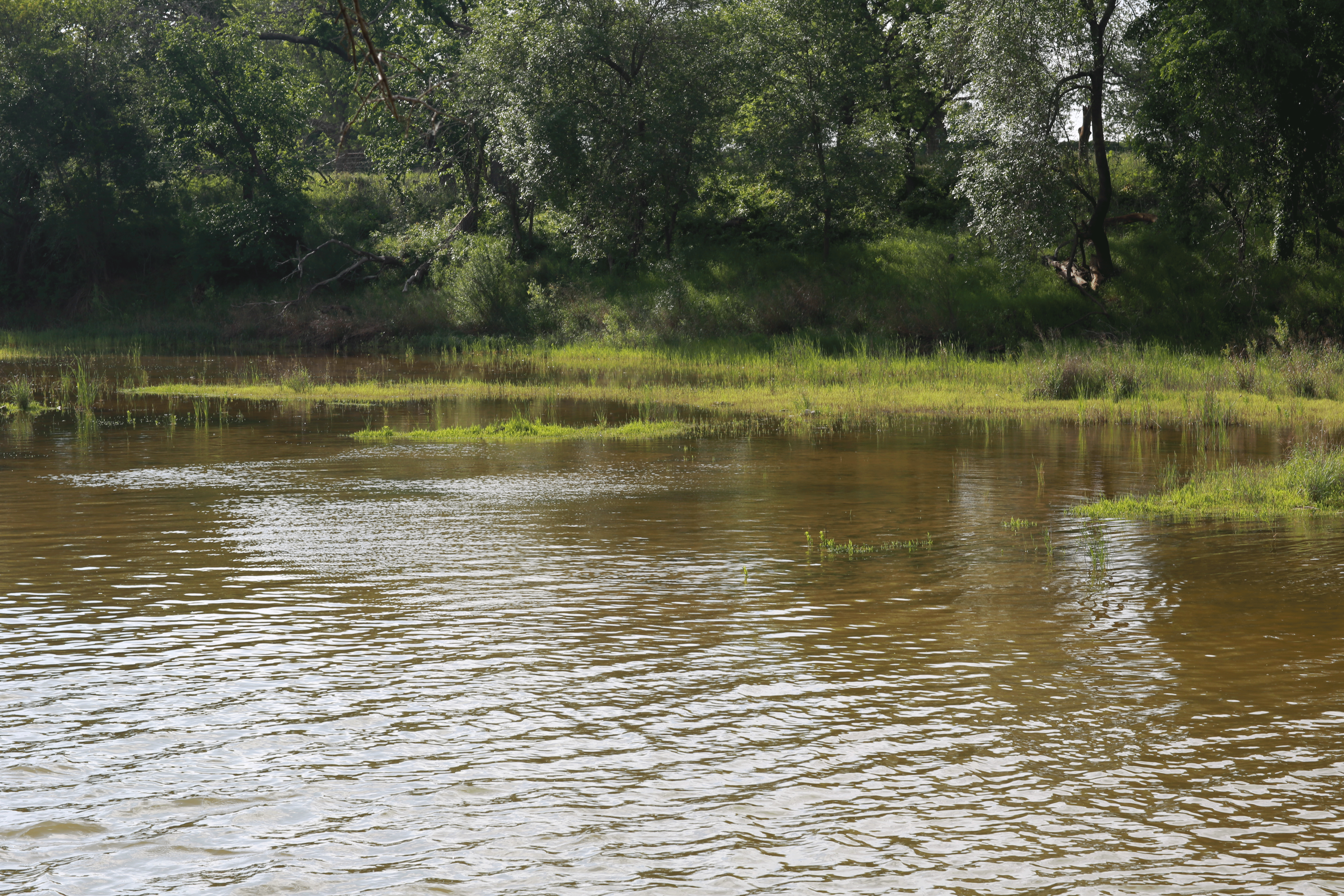
The Case of the Disappearing Groundwater
Sharra Blair-Kucera left a 20-year career in manufacturing to study water conservation and resource management. She found that Texas is running out of groundwater.
Water is a personal matter for Sharra Blair-Kucera. Twenty years ago, she purchased her grandparents’ home in Texas near the Brazos River. Three years later her well ran dry.
A team of water experts explained that the underground aquifer was empty. Blair-Kucera had to drill an expensive deeper well to keep water flowing through the faucets at the house in Rainbow, an unincorporated community near Glen Rose, which is about 25 miles southwest of Fort Worth.
The barren aquifer was not the only cause for alarm. The waters of the Brazos River, too, disappeared for months at a time. “We looked at [the river] as part of our yard,” she said. “To watch it change rapidly in the course of my lifetime, it’s been kind of scary.”
Frustrated about the public inattention to water concerns, Blair-Kucera left her 20-year career in manufacturing and returned to school. She is a double major in environmental science and geology. “I have a lot of feelings and emotions about water,” she said.
The environmentalist wants to sound the alarm that freshwater is a limited resource. If the faucets stop delivering, she said everyone would realize the serious problem of water scarcity.
“We only think about water whenever we have a drought,” she said. “If it’s good for years and years, nobody complains.”
Groundwater might conjure pictures of limitless reserves of age-old glacial melt flowing for miles underneath the earth’s surface, but water reserves are disappearing.
“They will run out of water sooner than they think”
Blair-Kucera
Blair-Kucera saw research as a pathway to gain a deeper understanding of the shrinking water reserves. She crunched numbers of the Texas Water Development Board’s groundwater estimations for two areas in the state’s panhandle.
Her initial plan was to analyze groundwater density numbers for the entire state and assess just how much water has disappeared from the underground aquifers and rock formations. But the project’s scope was too much to tackle, so she concentrated on the board’s two northernmost management areas in the Texas Panhandle, a large swath of farmland sandwiched between Oklahoma and New Mexico.
Both areas sit on top of the massive Ogallala aquifer, which runs from South Dakota to Texas. National Geographic estimates the Ogallala’s water irrigates 27 percent of the nation’s farmland.
The U.S. Geological Survey published a study showing a volume of water two-thirds the size of Lake Erie has vanished from the Ogallala since 1940. A Kansas State University research team estimated that 70 percent of the Ogallala’s water volume will be gone in 50 years. The low-level predictions have enormous implications for the nation’s food supply.
The problem starts when farmers tap into groundwater reserves to sustain their plants. For Texas, 2011 was the state’s driest on record. In these arid conditions, ranchers need more groundwater to continue operations, but the reserves never get replenished.
The problem hit the agricultural panhandle area harder than most. Blair-Kucera said the volume of groundwater in that region might be lower than even the direst predictions suggest.
“We only think about water whenever we have a drought. If it’s good for years and years, nobody complains.”
Blair-Kucera
For her project, Blair-Kucera assembled “every single resource” she could locate about the density of groundwater in those two regions. Using public data generated from sonar and satellite sources as well as the water board’s numbers, she investigated whether the two regions might be counting the same water twice when estimating their reserves.
“It’s almost like I’m auditing them, and just doing the math myself in different ways,” she said. In addition to analyzing current estimates, she used geographic information system maps to plot groundwater levels against regional population projections.
After assembling her data, Blair-Kucera concluded that significant overlap existed, and the regional projections are too optimistic. “They will run out of water sooner than they think,” she said.
The implications startled the novice researcher because she knows how much agriculture originates from the region. Wildlife in the area is affected, too.
Blair-Kucera said the world needs better conservation practices and more respect for the planet’s limited freshwater resources. “We’re going to have to change the way people think about water.”

The Brazos River outside of Blair-Kucera’s home has been disappearing for months at a time.

Your comments are welcome
Comments
Related reading:
Features, Research + Discovery
The Genetics of Anthrax
Kevin Claunch ’14 postponed medical school to do research in microbiology. His work might lead to medicines able to disarm anthrax or even common staph infections.
Features, Research + Discovery
Cancer Across the Language Barrier
Joselin Barajas learned from an illness in her family that cancer care is not always a culturally sensitive affair. Her pain management research could improve outcomes for Mexican-Americans, especially for her father.